Types of drainage
The drainage system is a rational resolution of issues related to the adverse effects of storm and groundwater on the structure. This structure is designed to cooperate and carry out the purification of fluid accumulated under a layer of soil, or in any structure.
The presence of highly moistened soil on the site, which impedes the normal process of building and planting plants, provides the basis for the introduction of a hydraulic design here. That it will contribute to the abstraction of excess fluid from the soil. Drainage types are distinguished on the basis of such a parameter as the depth of the drainage device. Drainage can be located on the surface, in depth and be vertical.
Main purpose
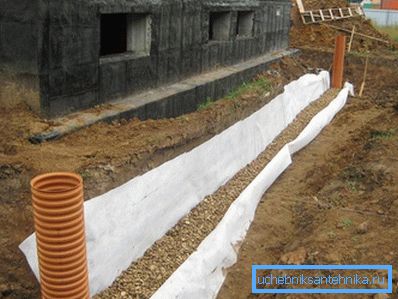
The drainage system consists of drainage pipes, interconnected and located near the selected types of construction. It is laid on the site in need of drying. The fluid first passes through the soil, then enters the drainage, and, eventually, through the perforated holes it turns out in the pipe. The size of the holes varies in the range of 1–5 mm. Such recesses are located almost throughout the pipe. Sand and crushed stone are used as backfill.
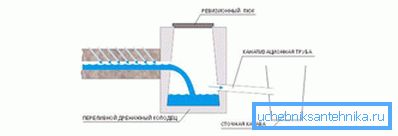
Any selected drainage system is equipped with a special well designed to collect water. To install it is recommended to dig a deep hole. At the same time it is necessary to keep records of relief terrain indicators. The presence of small elevation differences provides the basis for placing such a well anywhere in the site.
Varieties of drainage systems
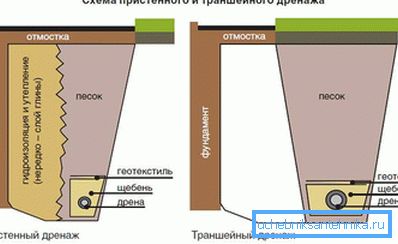
There are various types of drainage systems. Starting the process of development of the territory, it is important to choose a particular species.
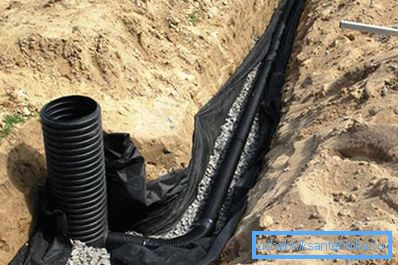
Drains differ in the depth of the drainage pipe. Allocate superficial and deep drainage.
Surface drainage
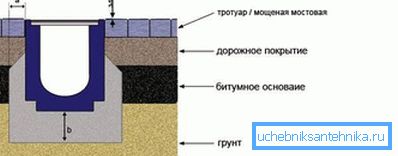
It belongs to the category of simple types of drainage systems. A system of this type accumulates moisture coming in the form of precipitation, reducing the high level of humidity. Work on the selected type of drainage system is not difficult at all. Plan extensive work on the soil is not necessary. Often this method of drainage is called storm drainage. It can be made in the form of point and linear drains. The point variant accumulates water from roofs or irrigation taps. Linear can collect water from a vast area.
Surface value systems or open drainage are simplified designs for disposal of waste water. They help to quickly get rid of moisture accumulated due to precipitation, melting snow, from a large amount of flood waters. Their maintenance does not represent special difficulties.
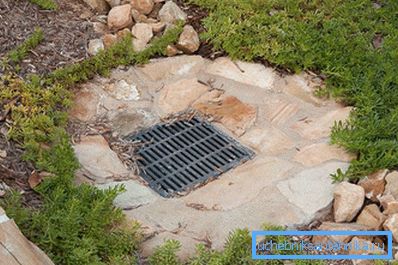
Types of drainage systems at the site are divided into linear and point. The first type of drainage systems is designed to move water collected from small areas of land. Trenches 30–40 cm wide are dug out all over the site. They are connected to a place where water abstraction is particularly required. Such ditches have a depth of about 50 cm and an inclined angle of the walls at 30 degrees. These moats lead to the main pit. All liquid is poured into it. The nodal cuvette is sometimes used simultaneously for all points. The system for diverting water from such a sample is often supplied with special tanks for cleaning the liquid from possible litter and sandy sediment. Similar structures are closed with bars.
Another type of drainage structures, called linear, is used as water drainage from the base of the house. Liquid can come from roofs, from drain pipes. For these purposes, used storm water receptacles, complete with siphon bulkheads. They, in turn, contribute to blocking the unpleasant odor from the sewer openings of stormwater devices. There are also baskets that collect garbage.
In order for the drainage system to function normally, you should fill the finished ditches with suitable materials that provide good filtration. This is a river pebble, crushed brick, crushed stone, etc. The height of this layer should be about 30 cm. The selected drainage will stand for just over 5 years.
Tip! Over time, the drainage pipes will gradually be filled with earth.
Deep drainage
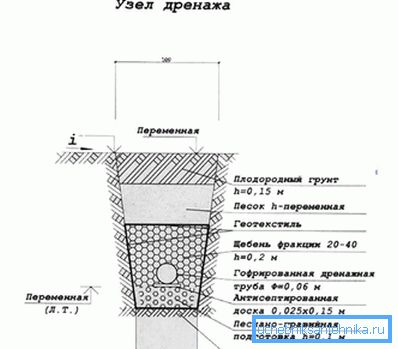
This method of drainage is the drainage design of the horizontal position. It helps to reduce the height of the rise of soil water and bring excess water out of the boundaries of the allotment. In addition, this drainage helps to get rid of a significant accumulation of fluid in the process of the appearance of melt water and precipitation.
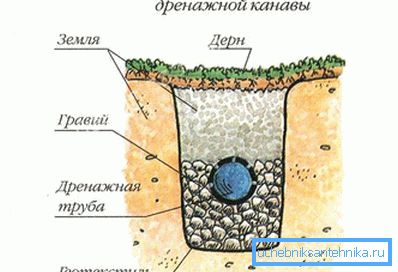
Deep drainage is often carried out in areas located in low-lying areas that have highly moist soil. Also, it is not possible to do without it in the places intended for gardening of the territory when laying paths and paths.
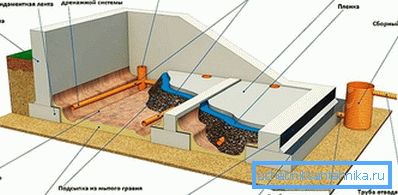
The essence of this system is that it consists of pipes with a perforated base, located in trenches dug at a certain depth. This design goes to the collector pipe of a larger diameter or to the well. In a small area you can use a pipe of small diameter, and in areas of a large area it is even supposed to install several wells at once. This type of drainage system is used very often.
In addition, the drainage is distinguished by the method of location of pipes: horizontal and vertical.
Vertical drainage

The selected structure is represented by several wells located near the building. This system collects water by pumps and is removed from the territory. To make such a device is easy, however, it may be difficult to develop a project. Here we need special knowledge from the field of engineering. For this reason, it is not necessary to independently engage in this type of work. To clearly carry out all the necessary work, you need to have hydraulic equipment.
Special drainage types
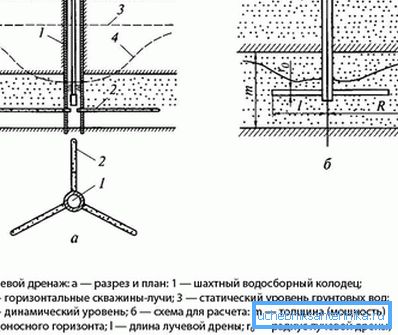
Beam drainage. It is often installed in the territories of industrial facilities. Consists of a significant number of wells.
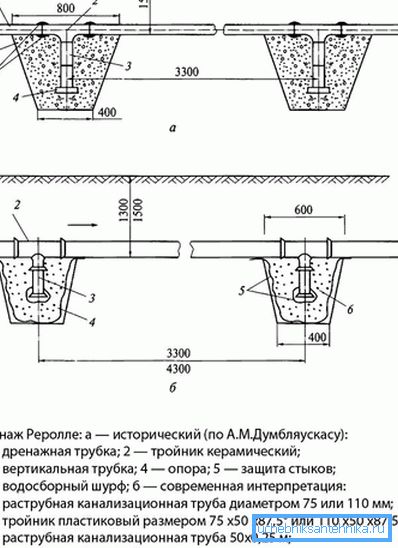
In the case of dense green spaces used double drainage, in similar conditions use drainage rorolle.

Coastal drainage settling in coastal areas. Outrageous - used to drain dams and dams.Features of the device ring wall drainage and reservoir drainage can be seen in the photo:
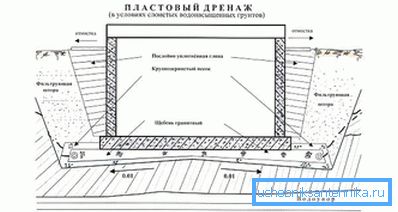

Using a certain kind of drainage structures on a house plot, it is possible to provide high-quality and stable protection of the base of the house against the destructive action of groundwater. The scheme of such a device must be well thought out and clearly organized. The event of such a plan is best to entrust specialists.
Video
The features of the choice of drainage pipes are described in detail below: